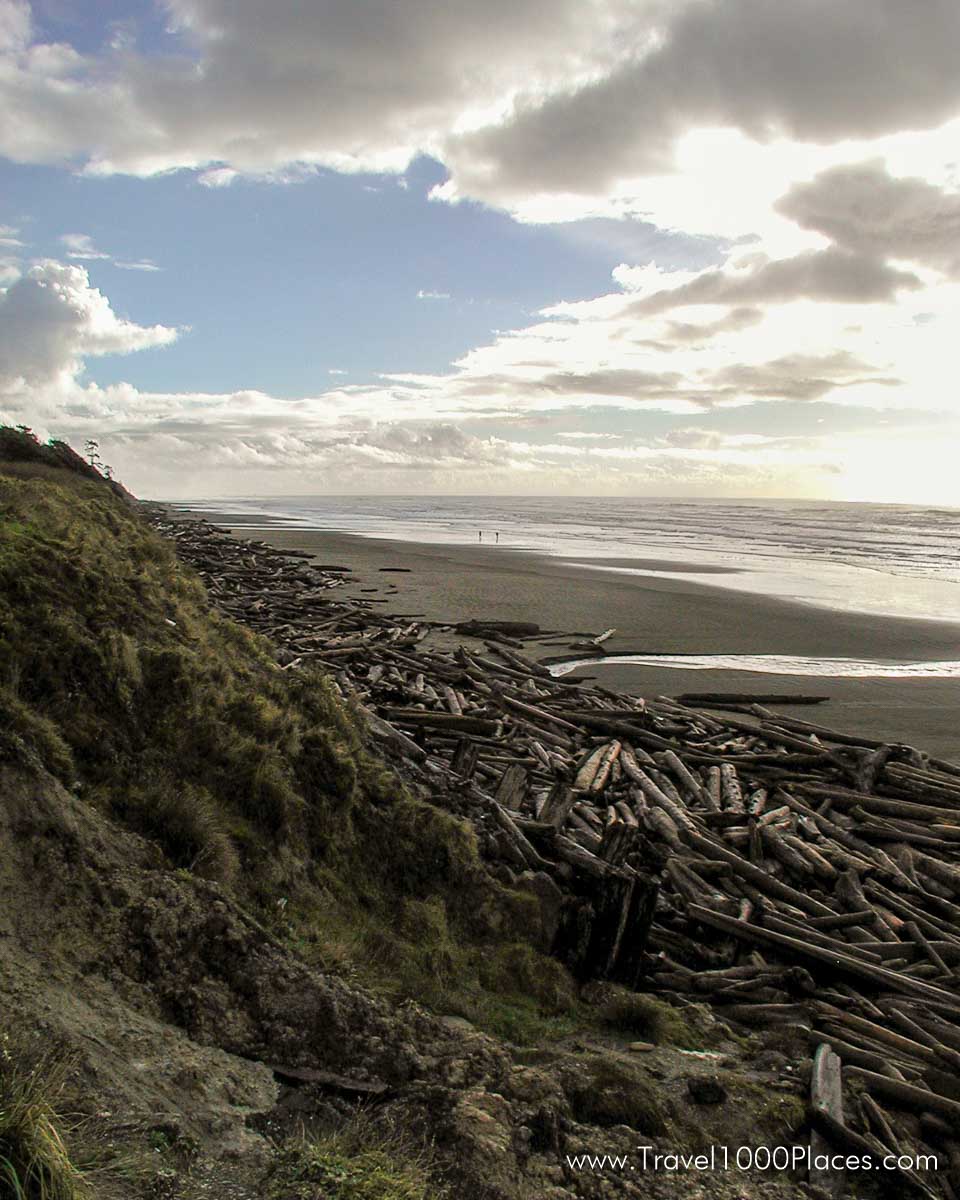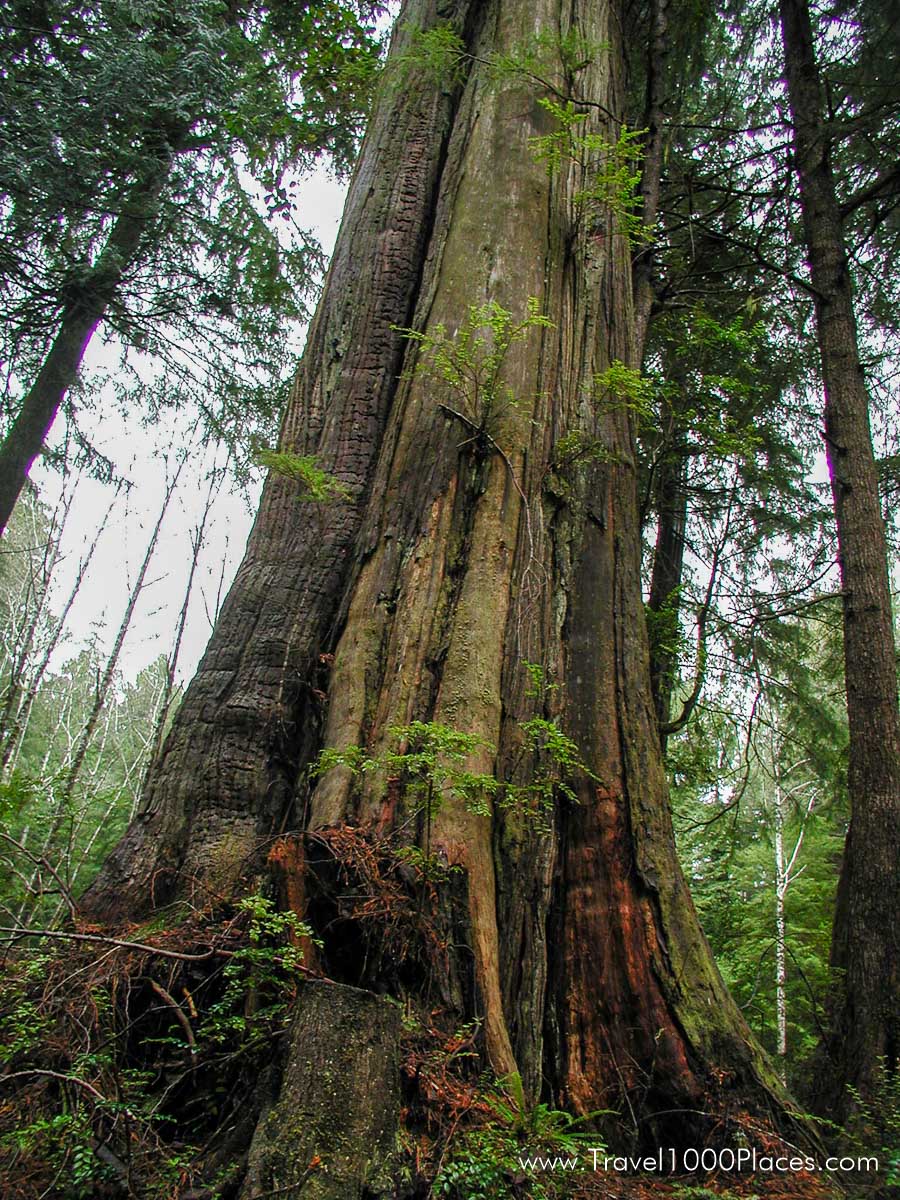

Overview
The park has three different ecosystems: rainforest, mountainous regions and 60 mi of Pacific coastline. Therefore, it is called a ‘3-in-a-park’. Shielded from the rest by glacial ice for thousands of years, eight plant species and five animal species have developed here, which are unique in the world and only occur here.
95% of the park is referred to as an undeveloped wilderness. This makes the park a special nature experience. Nevertheless, some trails have been developed in the park, which you can hike yourself without guided tours.
Olympic National Park has the largest herd of free-living Roosevelt moose in the world, undisturbed by humans. Some have already pleaded for the park to be called ‘Elk National Park’.
More information
- Olympic National Park, Washington, USA — Rain Forest
- Olympic National Park, Washington, USA — The Pacific Coast Region
- Olympic National Park, Washington, USA — Mountain Region
Location
Olympic National Park is located west of Seattle. You can reach the peninsula either by car ferry or bypass Puget Sound south and take Interstate 5 to Tacoma or Olympia and then via US 101.
US 101 also runs to Port Angeles, the park’s main entrance.
The national park is located on the Olympic Peninsula, west of Seattle.
U.S. Highway 101 runs through the entire park and you can branch off from there to all parts of the park.
Map Olympic National Park
How to get there
Car Ferry
You can take the ferry from Seattle to the Olympic Peninsula. From the Seattle ferry terminal, head to Bainbridge Island or Bremerton. Other ferry terminals are located south and north of Seattle, for example in Edmunds. For ferry prices, routes and booking, please visit the official website of Washington State Ferries: Official Washington State Ferries Website: https://www.wsdot.wa.gov/ferries/
By car without ferry
From the greater Seattle area, you can generally take Interstate-5 to U.S. 101, which will eventually drive around Puget Sound and reach the peninsula.
Visitor Center
In Port Angeles is the main Visitor Center, which is open all year round. Rangers are present. Here you will get your maps of the park and information if you wish. If you are travelling in late autumn, winter or spring, you should definitely check with the rangers about road conditions.
Hoh Rain Forest and Hurricane Ridge are open year-round. Ranger stations continue to be in Storm King on Lake Crescent, Ozette, Kalaloch and Staircase.
For all specific information visit the official park website:
Admission
Per car $30, per motorcycle $25, each valid for 7 days. Save with the National Park Annual Pass, which is already worthwhile from about 3-4 visited parks: America the Beautiful is the name of the U.S. Annual National Park Pass for all parks
Official Website
NPS (National Park Service) Information: Olympic National Park (U.S. National Park Service) (nps.gov)
Itinerary Ideas
Several Hours
If you only have a few hours, stop first at the Olympic National Park Visitor Center in Port Angeles. Exhibits, an orientation film and friendly staff will help you make the most of your time at Olympic.
After your visitor center stop, you might consider one of these options:
- A 45-minute drive from Port Angeles to Hurricane Ridge brings you from the lowlands blanketed with old growth forests to treeline, where clumps of subalpine firs give way to open meadows. On a clear day, views of the Olympic Mountains and Strait of Juan de Fuca are spectacular.
- From Port Angeles, drive about 30 minutes west to Lake Crescent where you can stroll along the shores of the 12-mile long, glacially-carved lake.
- From Forks, a 20-minute drive will bring you to Rialto Beach, where you can walk along a beach amidst drift logs and stones, watch waves crash onto offshore islands, and perhaps spot a bald eagle soaring overhead.
One Day
With one long day, you’ll have time for a quick visit to each of Olympic’s major ecosystems, the mountains, the forest and the coast.
- You can reach nearly a mile in elevation with a trip to Hurricane Ridge, where you’ll find a visitor center and nature trails. Beginning early in the morning will increase your chances of seeing wildlife and help avoid the larger number of visitors later in the day.
- From Hurricane Ridge, a three-hour drive to the west will bring you to the Hoh Rain Forest. A visitor center, picnic area and short nature trails can enhance your rain forest visit.
- After leaving the Hoh, an hour and a half drive toward the northwest will bring you to Rialto Beach on the Pacific Ocean in time for sunset.
- Grocery stores, restaurants and other amenities are available in the towns of Port Angeles, Forks and at other locations along Highway 101 and the park access roads.
Two or More Days
With more time, you can explore more of Olympic’s diversity. Perhaps you’d like to spend a few hours or longer hiking one of the park’s trails, or visiting a lesser-known area like Deer Park or the Quinault Valley. You’ll find more ideas in the Places to Go section of this site.

